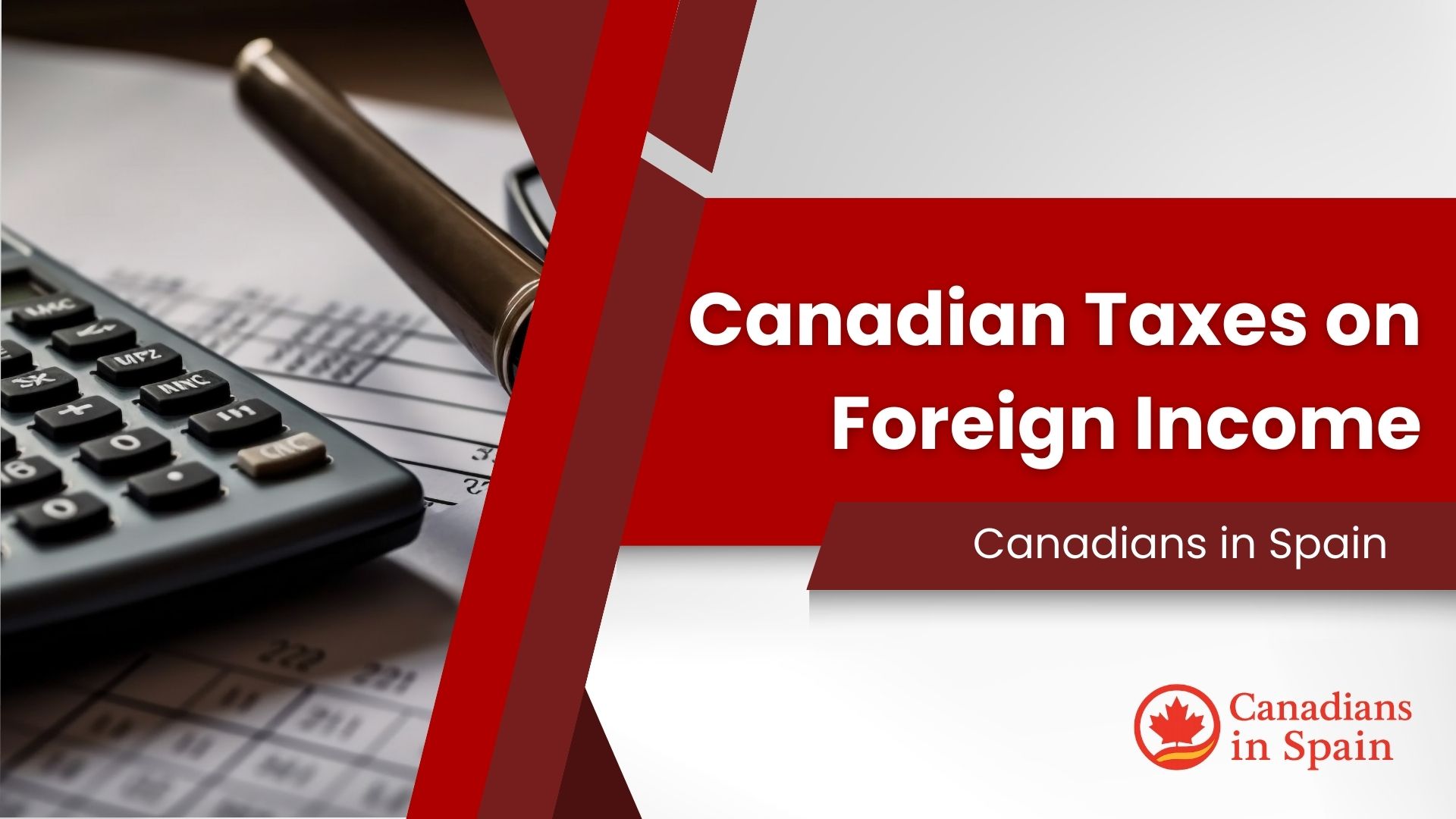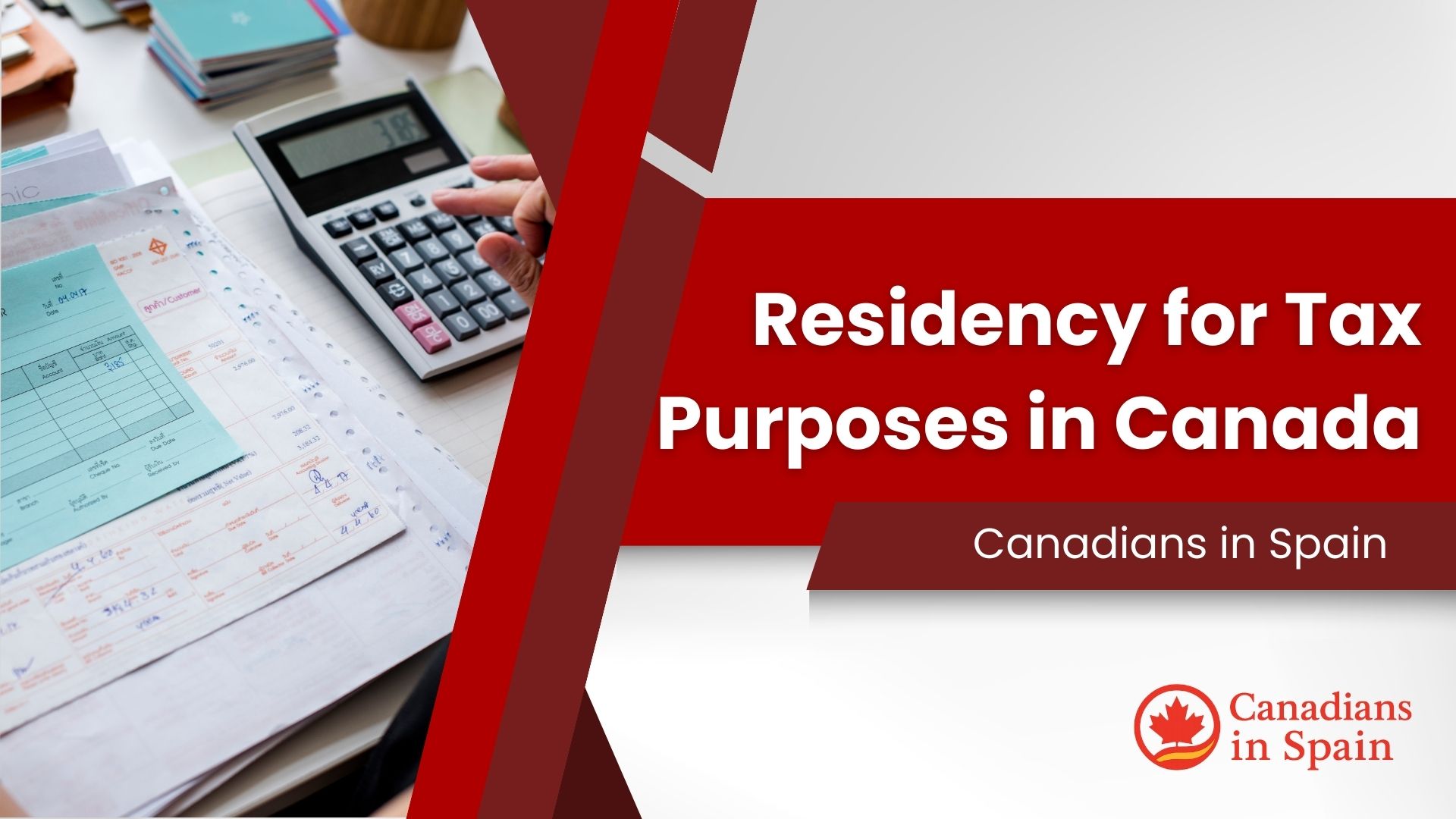The Ultimate Guide to Canadian Taxes on Foreign Income & The Exit Tax
If you’re a Canadian thinking about making the move to Spain, you’re likely asking: What happens to my taxes? One of the most important and often misunderstood aspects of relocating is how Canada treats your assets once you leave. That’s where Canada’s Exit Tax comes into play, a crucial component of understanding Canadian taxes on foreign income.
This article explains what the exit tax is, how it affects you, and what steps you must take to stay compliant while optimizing your tax situation before, during, and after your move to Spain.
What is Canada’s Exit Tax? A Key Part of Canadian Taxes on Foreign Income
Canada’s exit tax, officially known as the “deemed disposition tax,” applies when a Canadian taxpayer emigrates and becomes a non-resident for tax purposes. In simple terms, the Canada Revenue Agency (CRA) treats your departure as a virtual sale of most of your assets at their fair market value, the day before you leave.
Here’s what happens:
- You are considered to have sold everything, even if you haven’t.
- You must calculate the capital gains on the growth of these assets.
- You are required to pay tax on these unrealized gains on your final Canadian tax return.
This is a one-time tax designed to ensure that Canada gets its share of the appreciation on your assets that occurred while you were a Canadian resident. It is a fundamental concept within the framework of Canadian taxes on foreign income for emigrants.
Understanding Your Status for Canadian Taxes on Foreign Income
You are affected by the exit tax if you are ceasing to be a tax resident of Canada. This is not just about leaving the country; it’s about severing your residential ties. If you’re spending more than 183 days per year in Spain, have your center of life there (home, family, social connections), and intend to stay long-term, you will likely be considered a non-resident of Canada. This change in status triggers the exit tax and fundamentally alters your relationship with Canadian taxes on foreign income.
Assets Subject to the Exit Tax
The deemed disposition applies to most types of capital property. Understanding what is and isn’t included is key to calculating your obligations. The rules for Canadian taxes on foreign income are specific about which assets are part of this final calculation.
Assets that ARE subject to the exit tax include:
- Shares in public companies (e.g., stocks in your trading account)
- Mutual funds and ETFs
- Cryptocurrency
- Real estate located outside of Canada
- Shares in private companies
- Valuable art and collectibles
Assets that are NOT subject to the exit tax include:
- Canadian Real Estate: This is taxed by Canada only when you actually sell it.
- Registered Accounts: RRSPs, RRIFs, and TFSAs are exempt from the exit tax but are governed by their own specific rules for non-residents.
- Canadian Pensions: Rights to CPP, OAS, and certain employer-sponsored pensions are not affected.
How the Exit Tax Works (Example)
Imagine you bought $50,000 in stocks that are now worth $90,000 on the day you leave Canada for Spain.
- Deemed Capital Gain: $90,000 (Fair Market Value) – $50,000 (Adjusted Cost Base) = $40,000
- Taxable Portion (50%): 50% of $40,000 = $20,000
- Tax Owed: If your marginal tax rate is, for example, 30%, you would owe $6,000 in exit tax ($20,000 x 30%).
This tax is due even though you haven’t actually sold the investment. You are taxed as if you did.
Reporting and Deferring the Exit Tax
You must file a final Canadian departure tax return for the year you emigrate. On this return, you must declare the deemed disposition and report any capital gains. You must use Form T1161 (List of Properties by an Emigrant of Canada) if the total fair market value of the property you owned at departure was more than $25,000, and Form T1243 (Deemed Disposition of Property by an Emigrant of Canada) to calculate your gains. This is a mandatory part of managing your Canadian taxes on foreign income.
Can You Defer the Exit Tax?
Yes, the CRA allows you to defer paying the tax until the asset is actually sold. However, you must post security (such as a bank guarantee) with the CRA if the federal tax owed on the deemed disposition is more than CAD $16,500.
Spanish Residency and its Impact on Canadian Taxes on Foreign Income
Once in Spain, you will likely become a tax resident if you spend more than 183 days there in a calendar year. As a Spanish tax resident, you must report and pay taxes on your worldwide income. This is where the topic of Canadian taxes on foreign income becomes intertwined with Spanish rules.
Thanks to the Double Taxation Agreement (DTA) between Spain and Canada, you can claim foreign tax credits in Spain for tax paid in Canada to avoid being taxed twice. However, it’s critical to note that Spain does not recognize the tax-free nature of the TFSA.
Planning Ahead: Steps for Managing Canadian Taxes on Foreign Income
- Notify the CRA of your departure date.
- Evaluate all your assets and calculate any unrealized capital gains.
- Consult a cross-border tax advisor who understands both Canadian and Spanish tax law.
- Consider selling or restructuring certain assets before your departure to optimize your tax situation.
- File all required forms (T1161, T1243, and T1244 if deferring) with your final tax return.
- Decide whether to defer the exit tax and arrange security if necessary.
Frequently Asked Questions (FAQ)
What happens if I don’t have the cash to pay the Exit Tax?
This is a common concern. If the tax owed is significant, you can elect to defer the payment until you actually sell the asset. However, you will need to provide security (like a bank guarantee) to the CRA for the amount owed if it exceeds CAD $16,500.
Does the Exit Tax apply if I’m only moving to Spain for a year or two?
It depends on whether you remain a “factual resident” of Canada. If you are leaving temporarily and maintain significant residential ties to Canada (like a home and family), you may not be considered an emigrant for tax purposes, and the exit tax would not apply. This is a key distinction for Canadian taxes on foreign income.
What happens to my capital losses when I leave Canada?
You can use any capital losses from the deemed disposition to offset capital gains in the same year. If you still have net capital losses, you can carry them back three years to offset gains in those years. However, you generally cannot carry them forward to use in future years as a non-resident.
How does the CRA know I’ve left Canada?
You are required to report your departure date on your final tax return. Additionally, through international agreements like the Common Reporting Standard (CRS), Canadian financial institutions report information on accounts held by non-residents to the CRA, which is then shared with tax authorities in other countries, like Spain.
Do I have to pay the Exit Tax on my principal residence in Canada?
No. Your principal residence is exempt from the deemed disposition rule. However, any capital gains that accrue on the property after you become a non-resident will be subject to Canadian tax when you eventually sell it.




